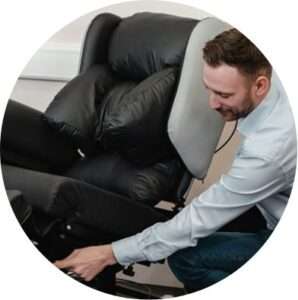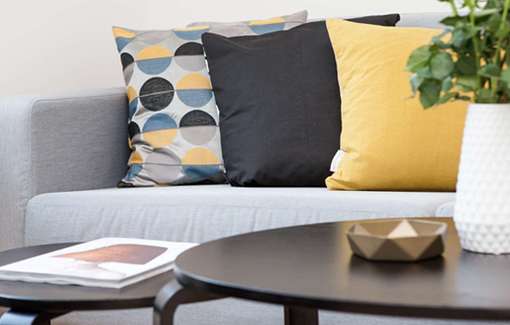Whether you are sitting in an office chair, car seat, or in your favourite armchair at home, good posture forms the foundation of what makes us sit comfortably.
Able-bodied individuals make small adjustments to their posture without really noticing, to shift pressure across different areas of the body. For less able-bodied individuals, adjusting their posture themselves can become more of a challenge, which is where good postural management techniques come into play. This is partly from how we sit and what type of chair we are using on a regular basis.
Jump straight to…
What is meant by good posture?
Although the type of chair needed may differ from person to person, the foundation of good posture has some common principles that are universal.
As Pauline Pope so succinctly put it, good posture does three things: it facilitates effective functional performance, it’s energy efficient, and it doesn’t harm the body systems. Let’s think about these three points for a minute.
Facilitates effective functional performance. We usually sit to carry out sedentary tasks, whether that is eating, working, writing, reading a book, or watching TV. Comfortable posture helps us to do these things effectively; it may sound obvious but if we were experiencing pain or discomfort while sitting, we wouldn’t be able to read a book easily or enjoy a meal!
Energy efficient. In simple terms, this means not having to correct and shift your posture all the time. If you are having to do this, the chances are you will not be very comfortable! When we achieve good posture, it is self-sustaining, in that one area of the body isn’t overloaded or bearing too much body weight.
Doesn’t harm the body systems. These are the negative effects of poor posture, which can create musculoskeletal problems and pressure sores to the skin if left unchecked for too long. Poor posture can also impact internal systems such as digestion and bowel function. Good posture will inevitably support good functioning of the body systems, rather than impact them negatively.
In more visual terms, good posture is maintaining an upright, self-supporting position in a chair, with the spine forming a natural S-shaped curve and the body aligned centrally in the chair. Body weight should be distributed through the upper thighs, buttocks and feet; the weight distribution between these areas can vary if someone is tilted backwards to achieve more pressure relief. Shoulders should be relaxed and the feet supported on the floor or a footplate.
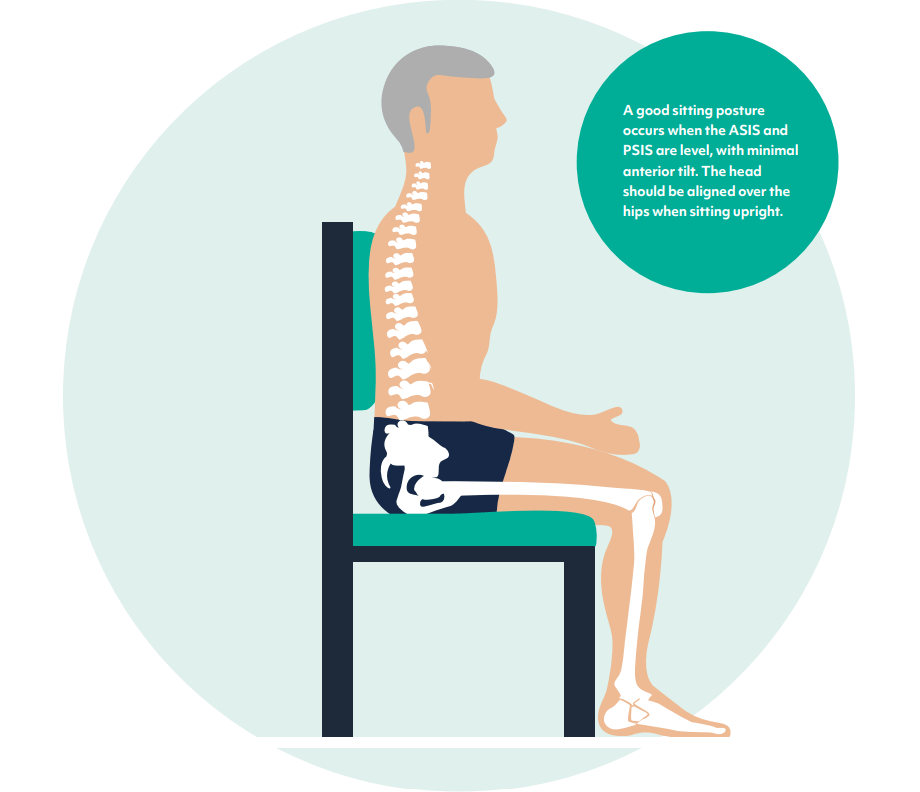
Is it possible to correct years of bad posture?
It is possible to correct years of bad posture providing the skeletal disorder has not become fixed, for example a fixed lordosis or kyphosis. Even in these scenarios though, it is possible to compensate for a fixed postural deformity with the right seating system.
Where someone has developed a postural deformity due to prolonged bad posture, we would usually recommend a seating assessment to see what the root causes of this are, and specify the right seating solution.
Book a Free Assessment
It may be that the chair someone is using is exacerbating a postural problem, or they have a medical condition that is making it a struggle to achieve good posture, such as Parkinson’s. Either way, specifying the right seating can gradually correct these issues over time and bring their posture back into alignment again.
We have a wide range of chairs that cater to almost any posture problem or deformity – browse our full seating range to learn more.
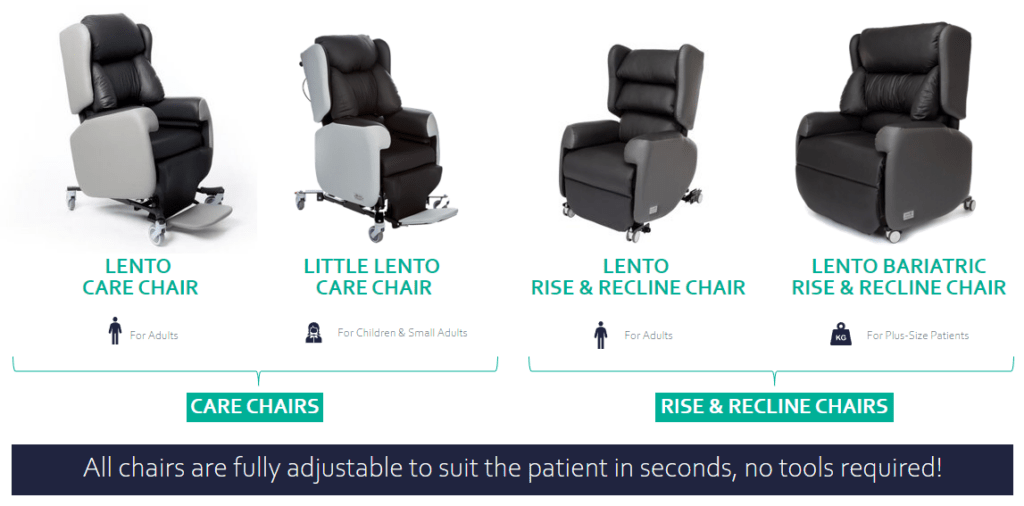
What are the symptoms of poor posture?
Aside from the patient experiencing physical pain and discomfort, there are some tell-tale red flags of poor posture that carers should look out for. If someone is cognitively impaired they may not be able to communicate that their seating is causing them discomfort, so this should not be relied on alone.
Other symptoms of poor posture are:
- Leaning sideways or forwards in the chair (slumped posture)
- Hunched shoulders, head facing downwards
- Slouching in the chair (sacral sitting)
- Body not centrally aligned – twisted trunk, legs angled to one side
- Pressure sores where the body is in contact with the chair
- Other secondary issues can result from poor body function, resulting in headaches, breathing and circulation problems, and poor digestion.
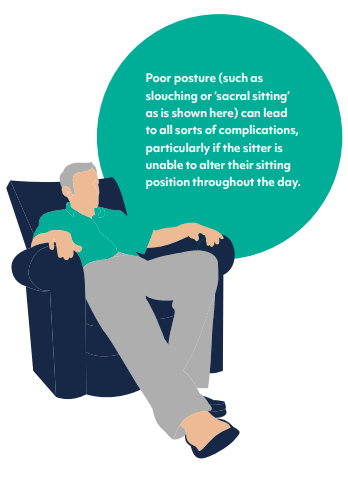
Generally, these symptoms will originate from poor pelvic positioning. The pelvis is the base for creating good posture; when the pelvis is correctly aligned, good posture in the rest of the body will flow out from this.
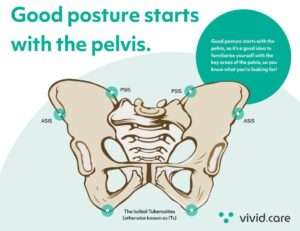
What are the best sitting positions?
The best sitting position for an individual depends on their height, what type of chair they are using, and what they are using the chair for.
First and foremost, the chair needs to be the right size for them, which is particularly important if they are using the chair for extended periods of time, for example a care chair or riser recliner. This involves getting the right seat height, width, depth and arm height. Having these dimensions correct will facilitate good pelvic positioning, and touched on above, which will in turn give a good sitting posture.
A good sitting position will include the following features:
- Feet resting flat on a floor or footrest
- Maintaining a small gap between the back of the knees and the chair
- Having the knees positioned at the same height or slightly lower than the hips
- Relaxed shoulders
- Sitting up straight and looking forward without straining the neck
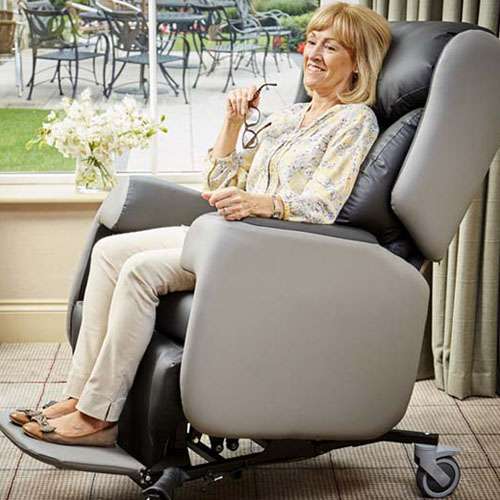
Let’s look in more detail at the best sitting positions for different scenarios:
Sitting at a desk
Sitting at a desk will usually involve an office chair that is height adjustable and has an adjustable lumbar support or backrest. These are the best sitting practices for when working at a desk on a computer:
- Keep the monitor at arms length
- Use a wrist pad to prevent wrist strain
- A footrest can help achieve the right height while still having your feet firmly supported
- Keep an upright, 90 degree sitting posture
- Take standing breaks at regular intervals
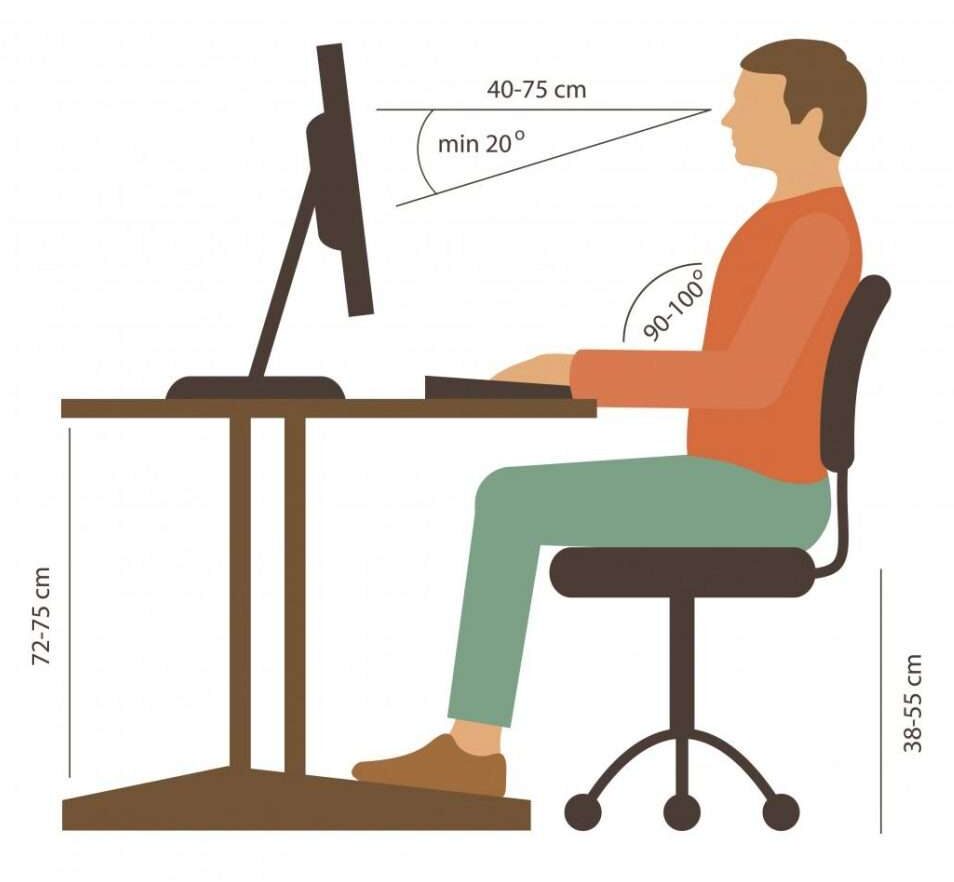
Watching TV
Usually in your lounge or living room, this will call for greater levels of comfort and relaxation! As well as having somewhere to rest that favourite tipple of yours, here are some tips for good sitting positions when using a recliner chair:
- Position yourself to the back of the chair when getting in, so you don’t create a large gap between the base of your spine and the backrest. This will help keep your posture upright and prevent you sliding down in the chair. The seat depth is the crucial measurement for this, so that you can sit up against the back of the chair whilst maintaining a small gap behind the back of the knees to avoid pressure on the calves.
- Use tilt in space. This can help redistribute pressure over the body and reduce pressure on the thighs, whilst still maintaining a good eyeline to watch TV. By tilting back in the chair you will also find your head rest against the backrest, so you might want to use a head cushion.
- Raising the legrest angle, which usually happens automatically with the tilt in space function, alleviates pressure in the lower legs which can be helpful for those with swelling.
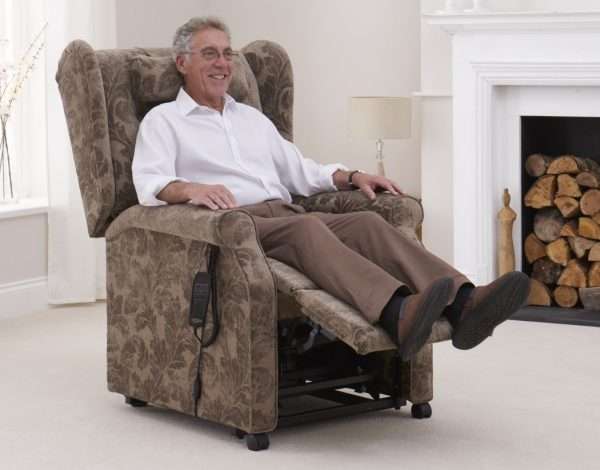
What is posture management?
In healthcare settings, posture management (or postural management) extends to sitting and lying and involves all caregivers in maintaining someone’s comfort and wellbeing, particularly those unable to change their position without assistance.
How long does it take to correct posture?
There is no definitive answer on how long it takes to correct bad posture, but most people will see noticeable improvements within a few weeks to a couple of months of consistent good practice. It takes time and perseverance to correct bad postural habits and build the muscle memory needed for good sitting positions.
Why is posture management important?
If someone is at greater risk of postural challenges, due to a chronic condition or physical disability, it is essential to ensure they have a good postural management programme in place. This can be done with the help of physiotherapists and OTs, and involves a holistic, multi-disciplinary approach that takes into account all their daily needs and activities.
How to improve posture with a chair
Seating interventions for people with poor posture has been our bread and butter for the last 30 years, so if you want to look at how you can improve your posture with the right seating, the best place to start would be to arrange a free seating assessment with us, which is completely no-obligation!
Arrange a No-Obligation Assessment
As well as looking at your postural presentation in the chair, a seating assessor would pay close attention to your seat dimensions. Download our seat sizing guide to learn more and check if your existing chair is the right size for you.
Check your pelvis
This can be done as part of a seating assessment or even checked yourself. Just feel for where the PSIS and ASIS bony protrusions are on your pelvis, to feel if they are level and aligned. This should give you a good enough indication if your pelvis is positioned correctly.
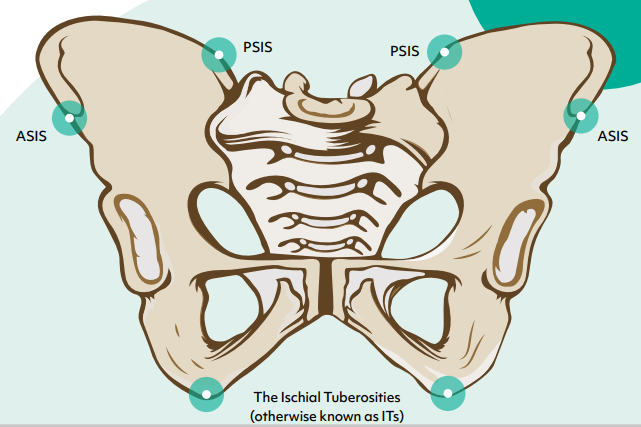
Best sitting positions and posture management: FAQs
Q: Can bad posture really be corrected?
A: In most cases it can, even after years of poor posture, unless the spine has developed a fixed deformity (like lordosis or kyphosis). Even then, specialist seating can often compensate and provide better alignment.
Q: Why is pelvic positioning so important for posture?
A: The pelvis is the foundation of seated posture. If it’s tilted or uneven, it can negatively affect alignment across the entire body, leading to discomfort or health problems.
Q: How long does it take to correct poor posture?
A: With consistent use of the right seating and practices, noticeable improvements can usually be seen within a few weeks to a couple of months. Full correction may take longer depending on individual needs.



